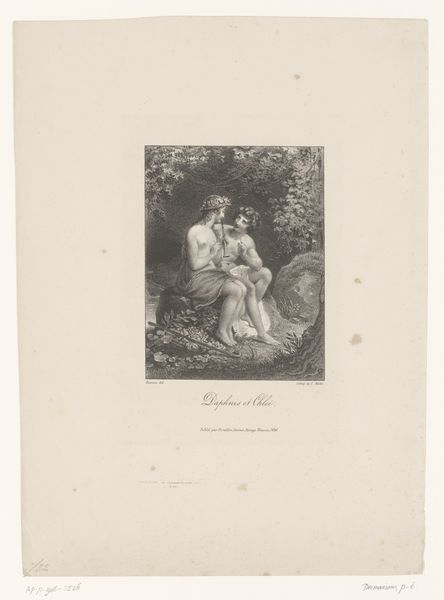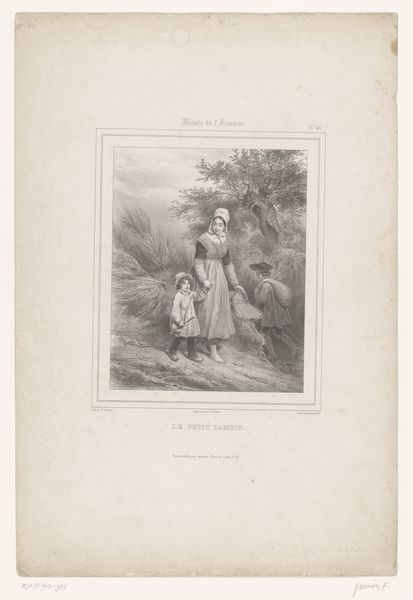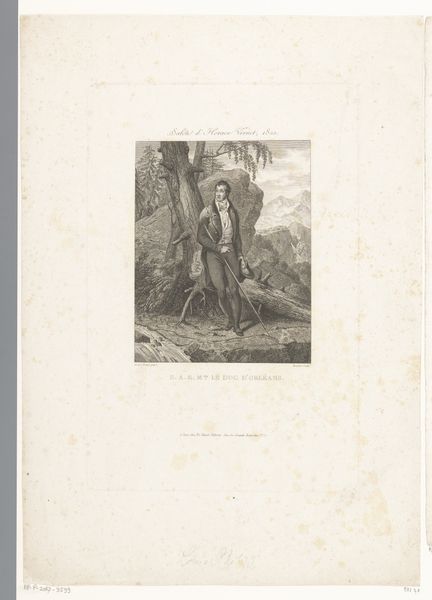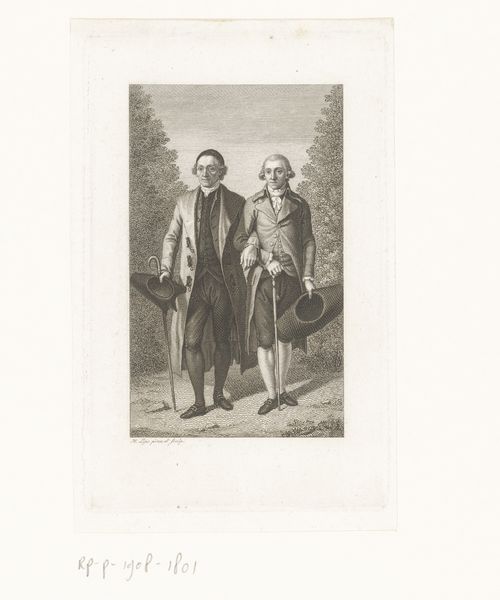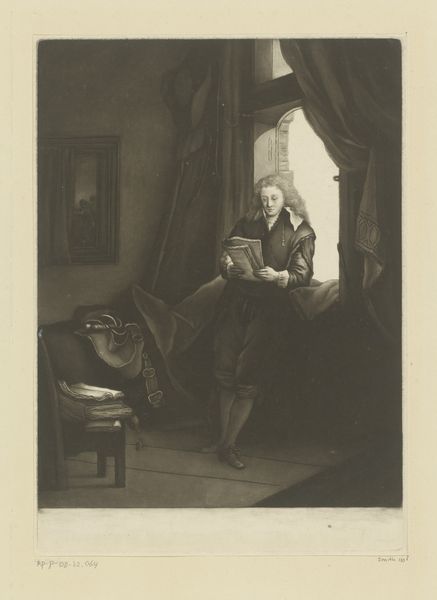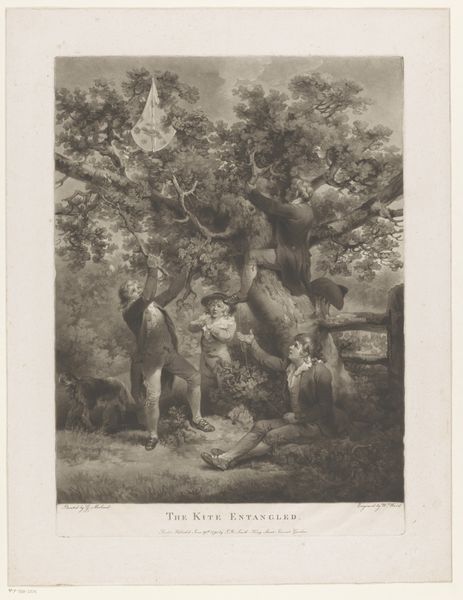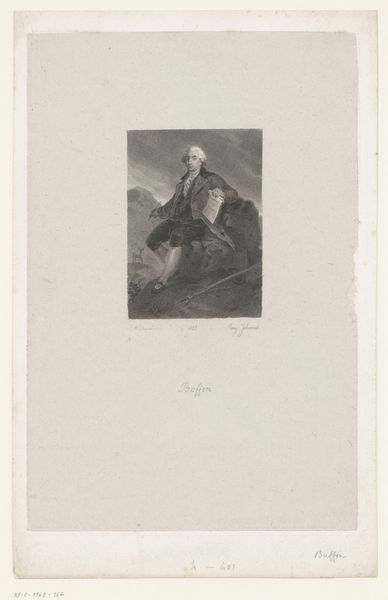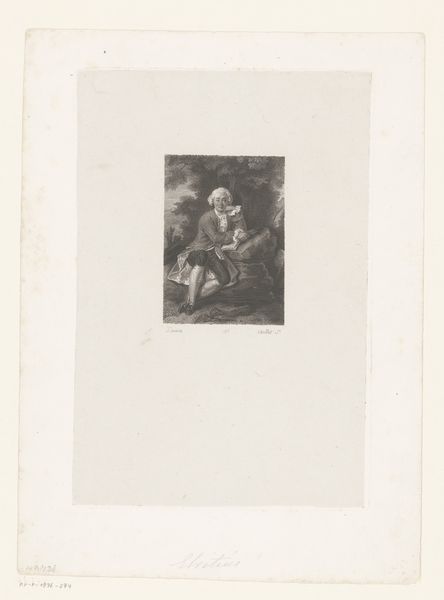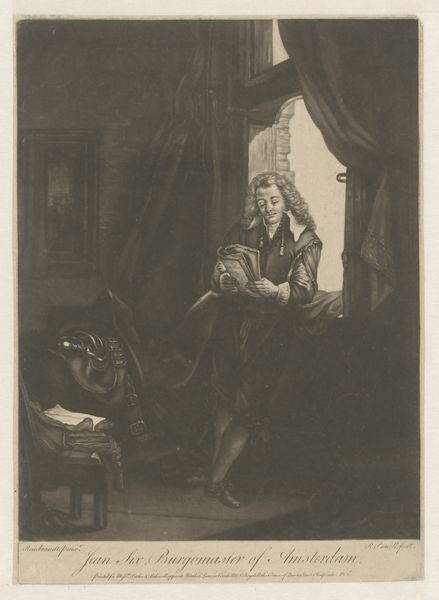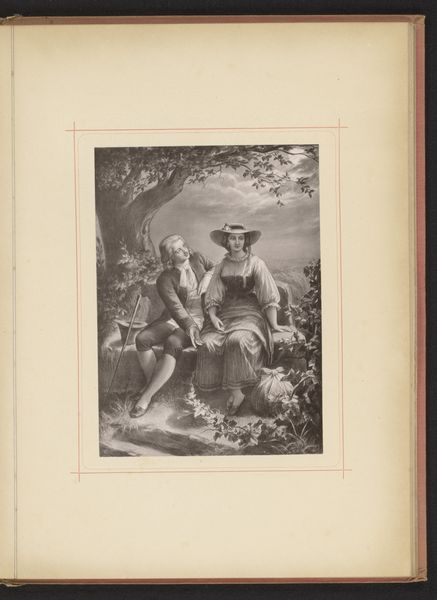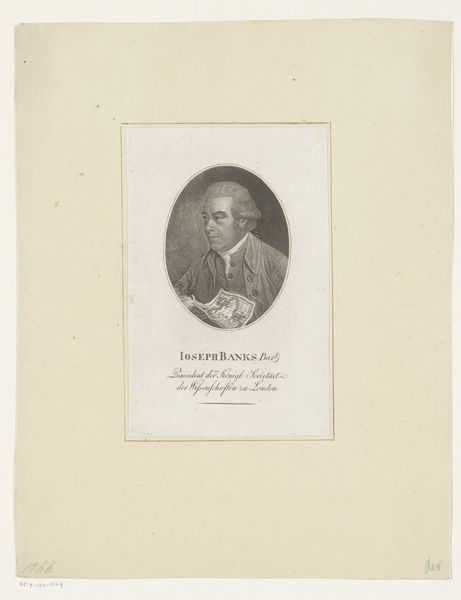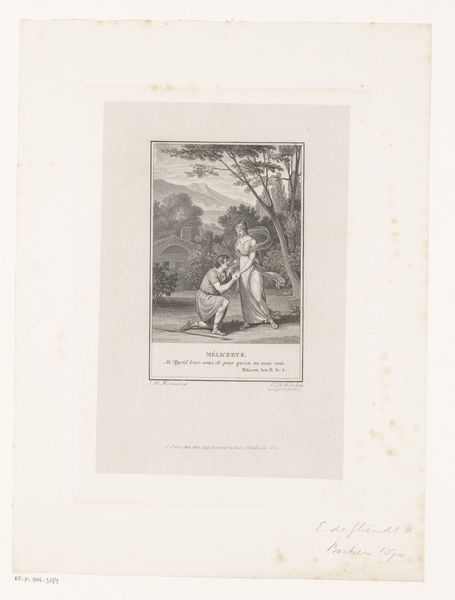
Portret van Jean-Jacques Rousseau, gezeten op een rots in een landschap c. 1824 - 1835
0:00
0:00
print, engraving
#
portrait
#
neoclacissism
# print
#
landscape
#
figuration
#
engraving
Dimensions: height 433 mm, width 345 mm
Copyright: Rijks Museum: Open Domain
Curator: Let’s explore this engraving: "Portret van Jean-Jacques Rousseau, gezeten op een rots in een landschap," dating roughly from 1824 to 1835, by Hippolyte Huet. Editor: Immediately striking, isn't it? There’s a melancholic air, a real sense of quiet contemplation created through the subtle gradations of light and shadow. The composition draws your eye upward, guided by the rocky outcrop on which Rousseau is perched. Curator: Absolutely. And that's significant, considering Rousseau’s legacy. Here, the emphasis isn’t just on portraiture; it blends nature and philosophy. It's worth considering the cultural context of Rousseau and the Romantic era where individuals, especially those challenging social norms, were often viewed through the lens of nature, either harmonious or volatile. Editor: A telling detail is the book clutched in Rousseau's hand. Semiotically, the book embodies knowledge, introspection—ideas he championed that shook the foundations of 18th-century thought. It presents the man in harmony with the ideas he presented. Curator: Right. Rousseau’s ideas challenged entrenched power structures, advocating for popular sovereignty and questioning inherent inequality. Depicting him immersed in nature reinforced his radical philosophies and aligns with the revolutionary spirit simmering during this time. The landscape underscores freedom, unbound by social constraint, offering refuge. Editor: I also appreciate how the line quality shifts; compare the crispness of Rousseau's jacket to the softening around the periphery of foliage. These are textural juxtapositions between civilization and nature, yes, but also between foreground and background. This tonal range, rendered through engraving, amplifies depth and isolates Rousseau from his surroundings. Curator: Yes, and situates him within the emerging Neoclassical aesthetic—reviving a focus on the individual and his role in society amidst political upheaval, while nodding at the prevailing Romantic glorification of nature. His placement high above the landscape symbolizes intellect overlooking social and political matters. Editor: A provocative visual statement. Overall, beyond being a mere likeness, Huet offers us a carefully constructed representation where form enhances ideology and speaks to enduring debates about nature, society, and the self. Curator: I agree; analyzing how identity and social change manifest within artworks like this, prompts essential dialogues about power and social responsibility, all within this print.
Comments
No comments
Be the first to comment and join the conversation on the ultimate creative platform.
